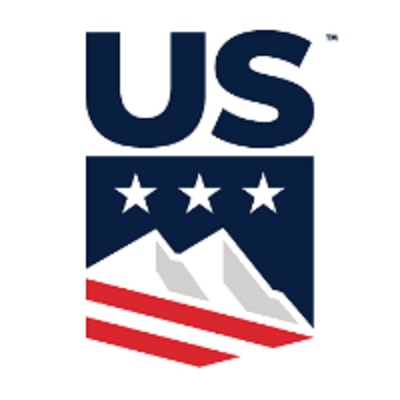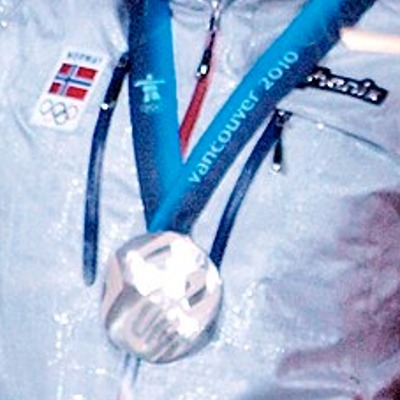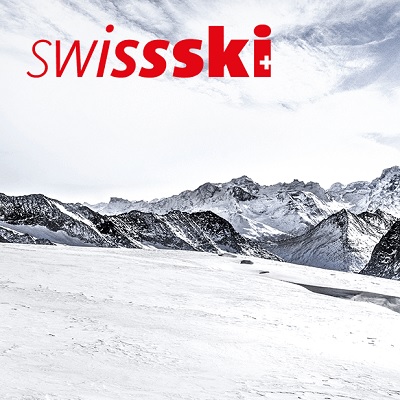FIS Q&A With Leif Kristian Nestvold Haugen

FIS ran a Q&A with Leif Kristian Nestvold Haugen
Leif Kristian Nestvold-Haugen (born 29 November 1987) is a Norwegian World Cup alpine ski racer, specializing in the technical events of giant slalom and slalom.
Haugen made his World Cup debut in October 2009 in Sölden, and collected his first World Cup points with a 26th place. He won a bronze medal in giant slalom at the World Championships in 2017 and attained his first World Cup podium in March 2017 at Kranjska Gora, Slovenia.
Nestvold-Haugen represents the sports club Lommedalens IL, and hails from Lommedalen. He studied finance and international business in the United States at the University of Denver and graduated in 2012. At the Junior World Championships, he achieved two seventh places in 2006 in Mont-Sainte-Anne and an eighth place in 2007 in Flachau.
He has been on the roll in the last seasons and the attacking viking Leif Kristian Nestvold Haugen, who chose his own path and had to fight severe injuries, is nowhere close to stop fighting.
Back in 2006, you suffered a severe left leg injury – an open fracture with muscle and nerve damage. Do you still have any pain in your left leg?
I would say that it is still bothering me during dryland training. When we have an intense period where we train many days in a row with intense exercises like jumping or agility, then it would turn into pain. I had to adapt my daily routine and learn to work around it. But as long as I am in the ski boots it seems like it is keeping things in place and on race days you’re so full of adrenaline anyway that you don’t think about it too much.
What did this injury teach you?
Probably little bit of resilience. I had to think through if that was really what I wanted. I had to train hard to get my leg back in shape and come back stronger.
Since that accident, you’ve been *mostly spared of other severe injuries. Do you train differently now?
I train differently since the injury. I do most of the dryland together with the team. We, for sure, have a little bit of individual programs but when we train together, sometimes there are things that the boys can do which I can’t because I get pain. So I would work around that and do something that isn’t painful. The doctor said that it is not anything that is dangerous anymore. I will never be pain free, and there is still some aluminum in there, but I don’t want to undergo another surgery right now and have it taken out. I’m just living with it.
In 2008 you made the decision to move to the U.S. and attend the University of Denver, in order to better facilitate your alpine skiing career while earning a degree. What’s your best memory from those years in the U.S.?
It’s hard to pick one as there are so many of them. But for sure it’s very different when you’re competing for a team than individually. The number one priority at each race is to score points for the team to make the overall win with the university. Actually, it is a similar feeling and mentality to when we are racing in the team event. If you’re doing well, it benefits the team and we are all helping each other to reach our goal. So for sure, you become a better team player. But in terms of memory, it was pretty unique to go to the White House and meet with President Obama when we won the NCAA Championship in 2009. That’s something that I will remember forever.
In what way did this change influence your career as a skier?
When I left Norway, people thought that I was done with skiing and that I would make a career in business or finance. But I went over there with the goal to become a better skier. To reach that, I had to learn to think differently and put in the extra work. Despite the very good school program, I had to keep pushing and search for a competitive scene, also in summer. Those extra steps made me reach a new level and the Norwegian Ski Federation picked me up with open arms when I came back. I proved that I was good enough through my results.
What are the advantages of the U.S. system for education and sports compared with Norwegian or European structures?
In the U.S., the whole system is built around the athletics. The universities really want to have a strong athletic program to promote the schools. They facilitate the class schedules to fit perfectly with training. I was able to pick more classes in spring and in fall so I could go skiing five days a week in winter, and they offer the best possible training facilities for dryland. That’s definitely an advantage.
Your teammate Kjetil Jansrud said that your bronze medal in the giant slalom at St. Moritz 2017 was the “most deserved in the entire World Championships.” What does this respect and admiration from your teammate mean to you?
It means a lot when a good friend and someone that’s as successful as Jansrud says that. He knows what it takes to be at that level. But then I have to say, I feel like everyone that is at the start deserves a medal. They’ve all proven that they’re good and gone through the same pain that I did in years of training.
After being close to a podium many times in that season, did you also feel that it was “well-deserved”?
For me it was going through all these obstacles, going a different way, being on the World Cup tour since 2009, fighting for that breakthrough. I am very proud of that. Of course there were times when I was questioning what I was doing, but in the end it seems that if you put in the hours, you get rewarded for your work.
Did you see this accomplishment coming? Was something different on that day?
Not specifically in St. Moritz, but I felt that I was on the roll that season. I was learning something. I was getting somewhere. In the past I was never really able to let go on race day. In that season, I learned that no matter where I land on the scoreboard, no matter how the race goes, it is worth it to give it my all and risk enough. Because if not, with the high level in the tech disciplines at the moment, I would never get the result I want. You have to give 100 percent and take the risk to ski out. Also in St. Moritz, my family came with me and on the day before the race I didn’t think about the competition too much. That probably helped to relax.
This season, you were able to celebrate your first Olympic medal, together with your team in the alpine team event. Can you described what it was like to win a team medal and contribute to Norway’s best Winter Olympics ever?
I was very excited to win a medal, and contributing to the success of the Norwegian team is pretty cool. We watched the other athletes in Nordic, ski jumping, or even in the other alpine disciplines and to be able to match their performance and grab a medal is very fulfilling. Also, winning a medal in the team event was amazing. Of course I wish I had won a medal in an individual event, especially as I was very close after the first run in GS. But when you compete and succeed as a team, the feelings are multiplied.
That discipline made its debut in PyeongChang 2018. How do you like it?
Up to this point, alpine skiing was mostly about individual performances and in the recent years the team aspect came in. I personally love it. The dynamic is very different because you race head-to-head, you can see and feel the guy next to you, and for once you don’t compete against the clock but against one of your rivals. I know and like all the guys on the tour, but I have to admit that I like this rivalry and the mental game.
How do you see the evolution of this discipline in the future?
For sure it helps that I was successful in parallel events in the past. I like the format, the mentality and I think it’s a fun concept, so it’s easier to perform well. But I also heard from people watching the parallel events that it’s nice to watch. It’s a compact format where you can see instantly how things are changing during the run and who is faster. It is very easy to understand and so quite appealing to a lot of people.
Regarding to the evolution of the parallel disciplines, I hope it will become its own discipline, because at the moment it is not very fair to award GS and SL points at races that have little in common with those disciplines in the individual race. But the disciplines still need some development and some refining. The athletes are coming with feedback and the officials are looking into angles, safety, etc. so I think we are going the right way and it improves the sport. It brings the crowd closer to the athletes and the action, so for me it’s very positive.
On the World Cup tour, you were consistent this season and improving your ranking in slalom, but you didn’t manage to claim another podium. Which discipline is your favorite and why?
It’s hard to put a favorite, I would say between slalom and GS it’s the one in which I perform the best that’s the most fun. Both are challenging, and it is also challenging to try to be at the top in both. There are more and more specialists in each discipline and only very few athletes can potentially podium in both tech disciplines and I love that challenge. Also, it seems that training in one discipline is improving my skills in the other one as well. It’s skiing with a different timing and tempo. Training is both is making me a better skier overall, so there is no reason to pick only one for me.
What’s missing to make that step into the circle of the top favorites?
I have to say that after last season the expectations are much higher. This year I took a little more risk than in the previous seasons, which was one of my goals – not only make a podium, but really be competitive towards that top spot, but unfortunately raising the bar and pushing the limits ended up with many DNFs this season. In the end, I didn’t land that far from last years’ standings. But it’s a fact, no further podium this season.
It looks like you are maybe stronger at big events. How do you explain this?
Yeah, it seems like in the last couple of big events I didn’t perform worse than on the World Cup tour. I don’t know, when I was younger I got more nervous at World Champs or Olympic Games, but now I try to look at it as a normal race, as a regular World Cup. I try to keep the same routine and tell myself that it is just as important as a World Cup race. That way I think I’m able to keep it in perspective.
You are now 30, happily married, father of a two-year-young son Olav, have a university degree in economics and an Olympic and a World Championships medal. How do you keep all these aspects of your life in balance?
I don’t know. I’m a restless person; I have a hard time to really get satisfied with things. Even after winning a medal. To have a family is bigger than anything else, that puts things in perspective, but I’ve always liked the process of getting better and learning new things. I can almost say that I enjoy training and improving more than racing. I just like the feeling you get when you accomplish new things. But for sure having a family helps me to think about other things when I’m off the snow, I’m more relaxed and don’t get crazy in that skiing bubble. And then when I go back I’m more creative again.
What’s your next goal as an athlete?
After a couple of seasons like I had now, the natural thing is to look higher on the scoreboard and also get more consistent. For me it’s definitely not a concrete goal, but the process of improving. I don’t really look at failure like a downside, but more as an opportunity to learn and get better. That’s the part I like. Keep working.













